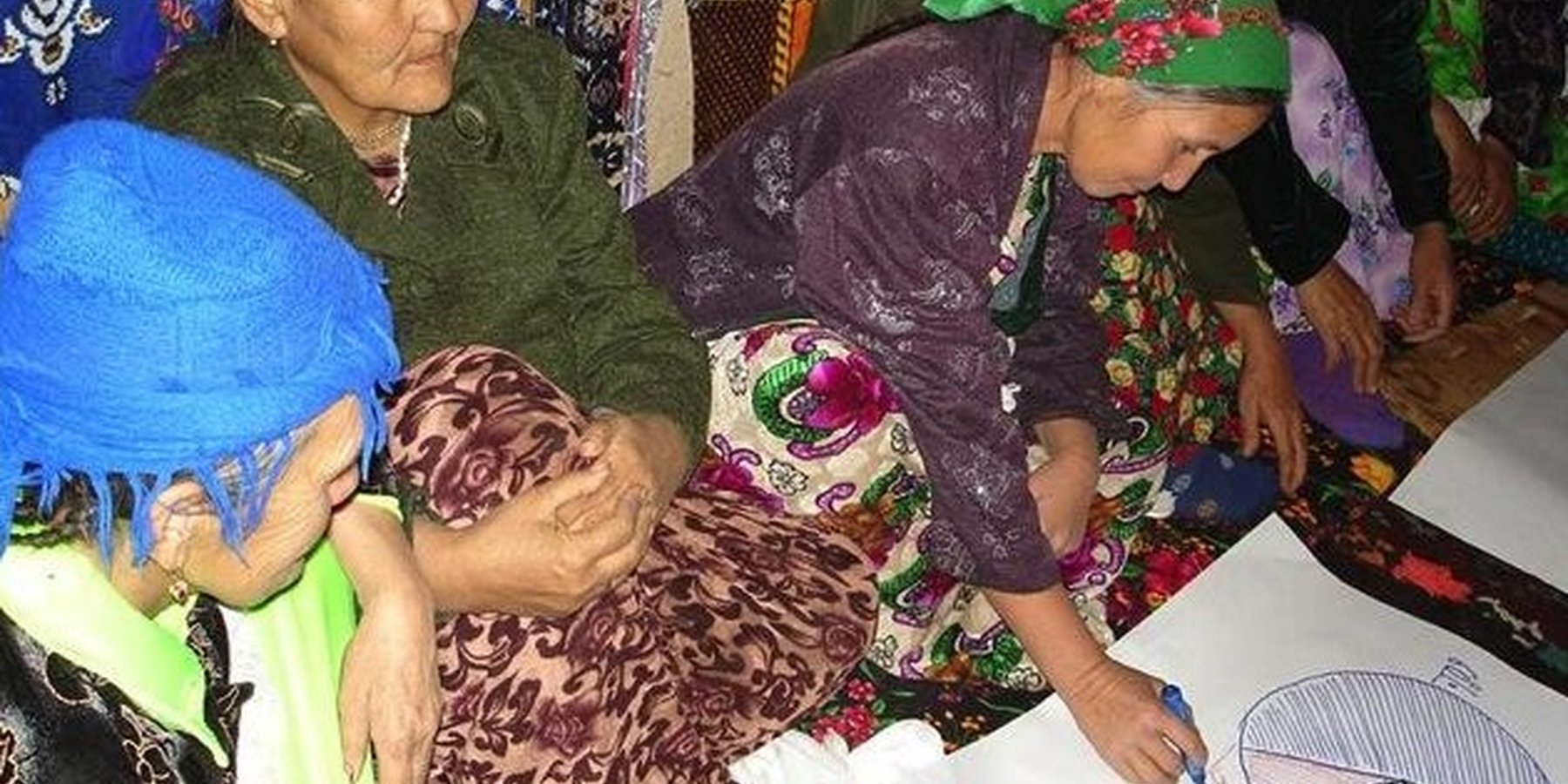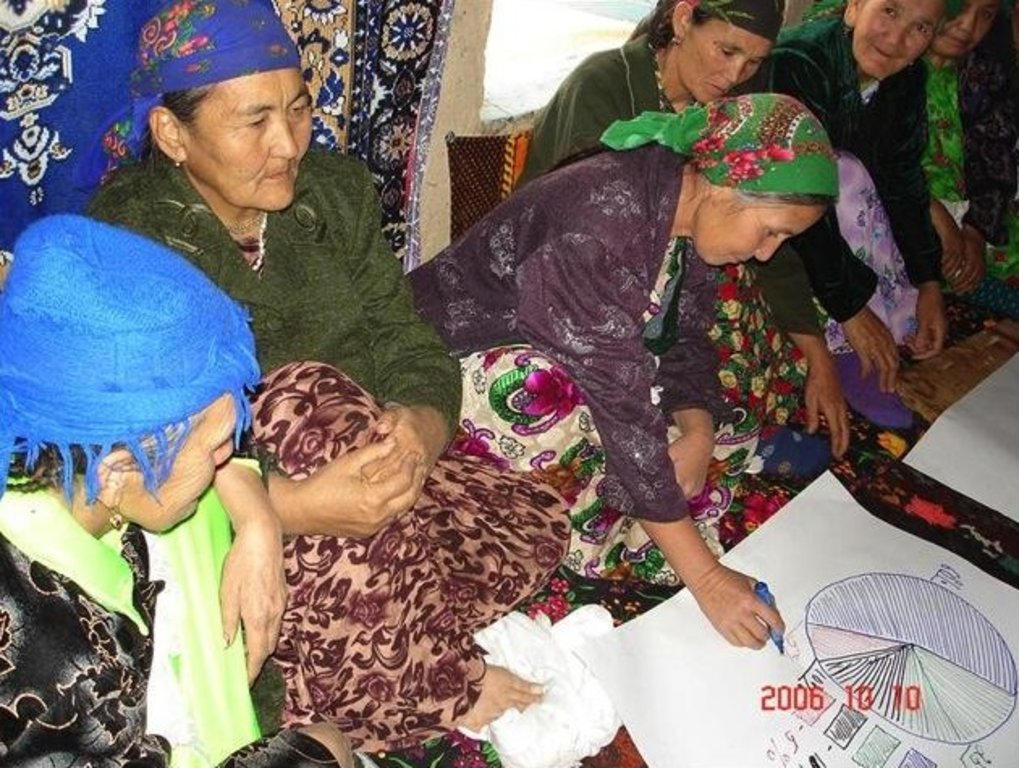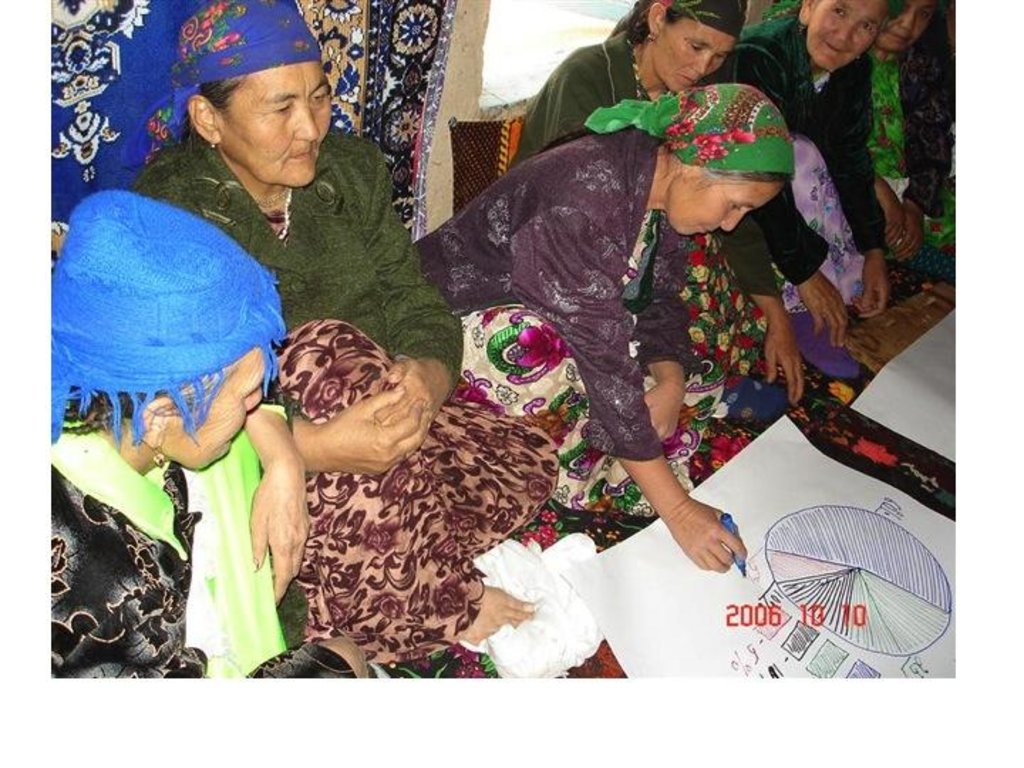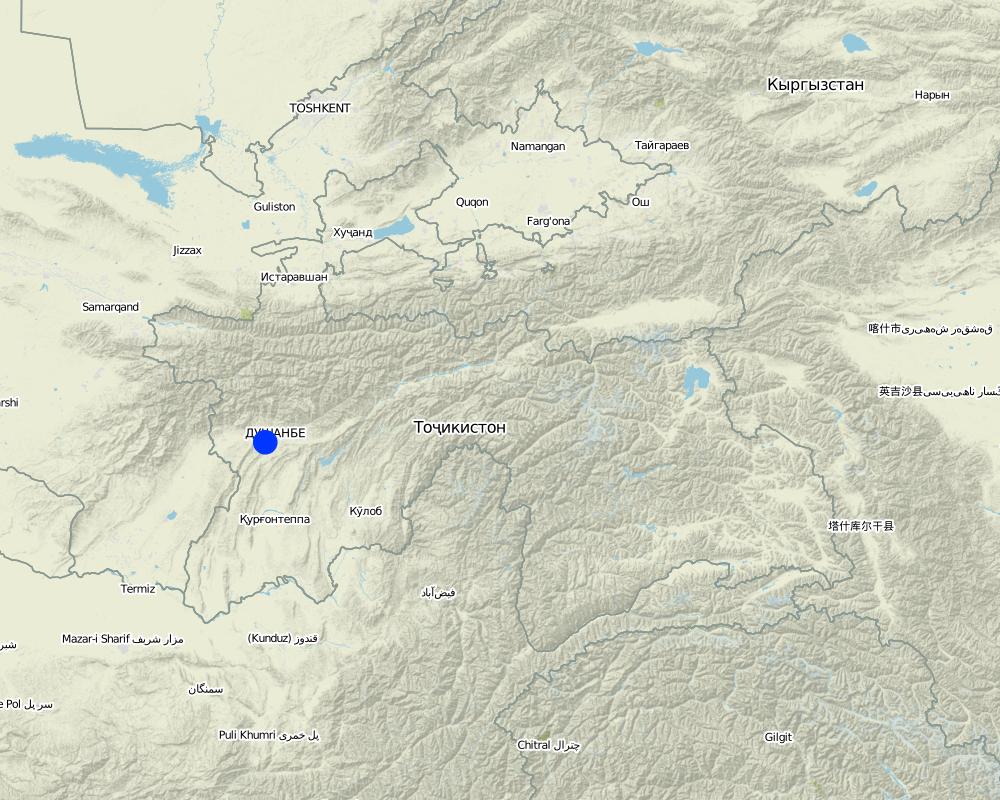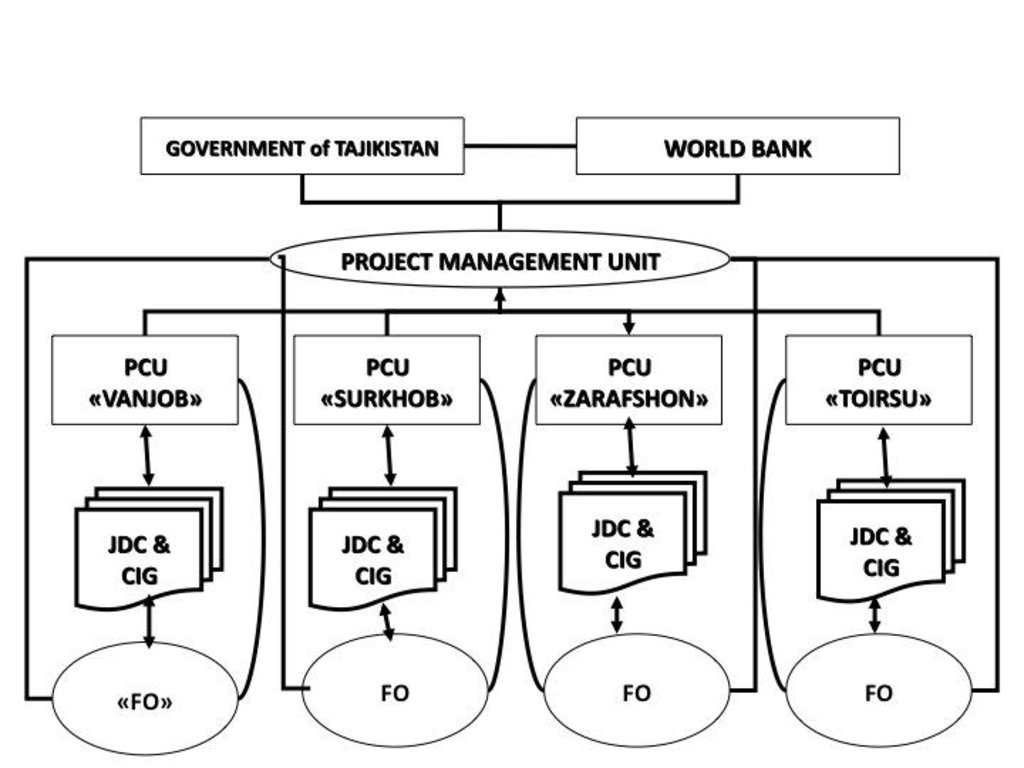Village-level participatory planning for sustainable agriculture and land management [ប្រទេសតាហ្ស៊ីគីស្ថាន]
- ការបង្កើត៖
- បច្ចុប្បន្នភាព
- អ្នកចងក្រង៖ Nandita Jain
- អ្នកកែសម្រួល៖ –
- អ្នកត្រួតពិនិត្យ David Streiff
approaches_2447 - ប្រទេសតាហ្ស៊ីគីស្ថាន
- សង្ខេបជា PDF
- សេចក្តីសង្ខេបពេញលេញជាទម្រង់ PDF សម្រាប់បោះពុម្ព
- សេចក្តីសង្ខេបពេញលេញទម្រង់អ៊ីនធឺនេត
- សេចក្តីសង្ខេបពេញលេញ (មិនមានទម្រង់ជាក់លាក់)
- Village-level participatory planning for sustainable agriculture and land management : 7 ខែ កក្កដា ឆ្នាំ 2017 (inactive)
- Village-level participatory planning for sustainable agriculture and land management : 7 ខែ កក្កដា ឆ្នាំ 2017 (inactive)
- Village-level participatory planning for sustainable agriculture and land management : 10 ខែ សីហា ឆ្នាំ 2017 (inactive)
- Village-level participatory planning for sustainable agriculture and land management: 2 ខែ វិច្ឆិកា ឆ្នាំ 2021 (public)
ពិនិត្យមើលគ្រប់ផ្នែក
ពង្រីកមើលទាំងអស់ បង្រួមទាំងអស់1. ព័ត៌មានទូទៅ
1.2 ព័ត៌មានលម្អិតពីបុគ្គលសំខាន់ៗ និងស្ថាប័នដែលចូលរួមក្នុងការវាយតម្លៃ និងចងក្រងឯកសារនៃវិធីសាស្ត្រផ្សព្វផ្សាយ
អ្នកជំនាញឯកទេស SLM:
Mott Jessica
World Bank
សហរដ្ឋអាមេរិក
ឈ្មោះអង្គភាពមួយ (ច្រើន) ដែលបានចងក្រងឯកសារ/ វាយតម្លៃលើវិធីសាស្ត្រផ្សព្វផ្សាយ (បើទាក់ទង)
World Bank (World Bank) - សហរដ្ឋអាមេរិក1.3 លក្ខខណ្ឌទាក់ទងទៅនឹងការប្រើប្រាស់ទិន្នន័យដែលបានចងក្រងតាមរយៈវ៉ូខេត
តើពេលណាដែលទិន្នន័យបានចងក្រង (នៅទីវាល)?
10/10/2016
អ្នកចងក្រង និង(បុគ្គលសំខាន់ៗ)យល់ព្រមទទួលយកនូវលក្ខខណ្ឌនានាទាក់ទងទៅនឹងការប្រើប្រាស់ទិន្នន័យដែលបានចងក្រងតាមរយៈ វ៉ូខេត:
បាទ/ចា៎
2. ការពណ៌នាអំពីវិធីសាស្ត្រផ្សព្វផ្សាយ SLM
2.1 ពណ៌នាសង្ខេបខ្លីពីវិធីសាស្ត្រផ្សព្វផ្សាយ
Design and implementation of participatory planning for village-level sustainable agriculture and land management investments through small grants for groups of upland farmers.
2.2 ពណ៌នាលម្អិតពិវិធីសាស្ត្រផ្សព្វផ្សាយ
ពណ៌នាលម្អិតពិវិធីសាស្ត្រផ្សព្វផ្សាយ:
Aims / objectives: As part of the CAWMP, participatory planning aimed to generate village-based community action plans (CAPs) that identified priority investments and beneficiaries for small grants to sustainably increase rural production. A total of 402 three-year plans were developed, through which about 4000 investments in four upland project sites were funded that resulted in increased livelihood assets for over 43,000 households and more than 96,000ha under improved land management practices.
Methods: Under supervision of a government-appointed Project Management Unit (PMU), four international facilitating organizations (FOs) were contracted to work closely with local field coordination units and Jamoat (“sub-district”) Development Committees (JDCs). An operational manual laid out guidelines for developing CAPs and the management of rural production investments. Activities could be proposed for three types of investment that would increase/improve: a) farm productivity, b) land resource management and c) small-scale infrastructure to support rural production. CAPs were required to include: (i) identifiers such as a location map, numbers of beneficiaries, area covered; (ii) an indicative list of investments and associated Common Interest Groups (CIGs) by investment type and cost; (iii) estimate of labor and materials needed; (iv) estimates of beneficiary contribution for each investment and (v) list of beneficiaries resulting from the improvements, and (vi) signed agreements to participate in the cost sharing, labor provision and subsequent operation and maintenance. Within each village, fixed amounts of funding were available and were exceeded by the value of proposed investments. Thus villagers considered the available budget, number of beneficiaries and associated risks when selecting investments (see TAJ044 for details). A beneficiary contribution of at least 25% of the value of the grant was required. In some cases, FOs and JDCs obtained other financing for activities outside of CAWMP.
Stages of implementation: Key steps in the implementation included: 1) Training of facilitators in participatory planning 2) Open village assembly introducing CAWMP and the CAP guidelines; 3) Participatory rural appraisals (PRA); 4) Sharing of findings in village assembly and identification of potential rural investments; 5) Prioritizing proposals and formation of CIGs; 6) Circulation of CAP, e.g., public display in JDC offices; 7) Preparation and submission of rural investment proposals with assistance from FOs and PCUs to JDCs/JRCs for initial screening and approval; and 8) Periodic meetings to review CAPs.
Role of stakeholders: Within villages, vulnerable households were identified and appraised through the use of PRA tools, such as wealth ranking and villager consultations and often were selected as priority recipients of initial investments. During the course of the project, environmental appraisal aspects of the planning process were strengthened through additional training in tools for participatory analysis.
2.3 រូបភាពនៃវិធីសាស្ត្រផ្សព្វផ្សាយ
2.5 ប្រទេស/តំបន់/ទីតាំងកន្លែង ដែលវិធីសាស្ត្រផ្សព្វផ្សាយត្រូវបានអនុវត្តន៍
ប្រទេស:
ប្រទេសតាហ្ស៊ីគីស្ថាន
តំបន់/រដ្ឋ/ខេត្ត:
Sughd, Region of Republican Subordination, Khatlon, Gorno Ba
បញ្ជាក់បន្ថែមពីលក្ខណៈនៃទីតាំង:
Jirgital, Tajikibad, Vanj, Aini, Matcha, Pendjikent, Danghar
មតិយោបល់:
The Community Agriculture and Watershed Management Project was implemented in four project sites/watersheds - Surkhob, Vanjob, Toirsu and Zarafshan - that included 7 districts/raions and 39 sub-districts/jamoats. The total catchment area was 35,000km2. Total arable, farm and pasture land was approximately 319,500ha
Map
×2.6 កាលបរិច្ឆេទនៃការចាប់ផ្តើម និងបញ្ចប់នៃវិធីសាស្រ្តផ្សព្វផ្សាយនេះ
សូមបញ្ជាក់ឆ្នាំដែលបានបង្កើតឡើង:
2005
ឆ្នាំបញ្ចប់ (ប្រសិនបើវិធីសាស្ត្រផ្សព្វផ្សាយត្រូវបានឈប់ប្រើប្រាស់):
2012
2.7 ប្រភេទនៃវិធីសាស្ត្រផ្សព្វផ្សាយ
- ផ្អែកលើគម្រោង/កម្មវិធី
2.8 គោលបំណង/ទិសដៅសំខាន់នៃវិធីសាស្ត្រផ្សព្វផ្សាយ
The Approach focused mainly on other activities than SLM (participatory planning, design, implementation, village-level, small grants, sustainable agriculture, sustainable land management)
Community action plans for villages generated from a planning process that was participatory, transparent and identified and prioritised fair and feasible options for increasing rural production in ways that are environmentally sustainable.
The SLM Approach addressed the following problems: Little prior experience in communities and organisations in participatory planning for sustainable agriculture and land management, particularly in the context of limited budgets. Marginalisation of poor and vulnerable groups and lack of transparency in decision-making over allocation of funding for investments.
2.9 លក្ខខណ្ឌអនុញ្ញាត ឬរារាំងការអនុវត្តន៍បច្ចេកទេសដែលស្ថិតនៅក្រោមវិធីសាស្រ្តផ្សព្វផ្សាយ
សង្គម/វប្បធម៌/ និងតម្លៃនៃសាសនា
- រារាំង
Poor and vulnerable groups not active participants in appraisals and decision-making and do not adopt SLM practices.
Treatment through the SLM Approach: Open meetings, PRA tools to encourage active participation.
ភាពអាចរកបាននៃធនធានហិរញ្ញវត្ថុ និងសេវាកម្ម
- រារាំង
Individual households unable to adequately invest in SLM investments.Few mechanisms to foster fairer distribution of resources along with feasible SLM options.
Treatment through the SLM Approach: Households are formed into CIGs. Transparent budget limits for types of investment encourage participants to propose fairer and feasible SLM options.
ក្របខណ្ឌច្បាប់ (សិទ្ធិកាន់កាប់ដីធ្លី កម្មសិទ្ធីប្រើប្រាស់ដីនិងទឹក)
- រារាំង
Absence of land use rights will affect sustainability of technology investments.
Treatment through the SLM Approach: Requirement that all CIGs have use rights nominally allocated. Project then assists in issuance of certificates.
The existing land ownership, land use rights / water rights hindered a little the approach implementation Very few Land Use Rights Certificates had been issued at start of project for arable land in upland areas. There was no provision for allocation of use rights to non-arable sloping lands suitable for horticulture, woodlots and other restricted access uses. However, project provisions (see 3.2.4.2) to assist in issuance of land use rights helped overcome this constraint.
ចំណេះដឹងស្តីពី SLM និងការទទួលបានការគាំទ្រផ្នែកបច្ចេកទេស
- រារាំង
Little experience among specialists and beneficiaries with an integrated participatory process for planning SLM and related investments.
Treatment through the SLM Approach: Tools for environmental, economic and social appraisals included in planning and further strengthened by training in additional topics, e.g., environmental analysis, financial management.
3. ការចូលរួម និងតួនាទីរបស់ភាគីពាក់ព័ន្ធ
3.1 អ្នកពាក់ព័ន្ធដែលបានចូលរួមក្នុងវិធីសាស្ត្រផ្សព្វផ្សាយ និងតួនាទីរបស់ពួកគេ
- អ្នកប្រើប្រាស់ដីក្នុងតំបន់/សហគមន៍
CIGs (Groups of households)
JDCs
As Common Interest Groups formed during planning
In some locations, cultural practices significantly limited female participation in planning. Generally, at least one third of women in villages participated in the planning processes. It should be noted that due to male migration, the number of female-headed households is increasing and depending on the location, their numbers can be significant.
Project population is generally considered poor or very poor. Within this population, PRA tools identified poor and vulnerable groups, who were then sometimes chosen as priority participants for certain types of rural investments.
As participants in village-level planning
- រដ្ឋាភិបាលថ្នាក់ជាតិ (អ្នករៀបចំផែនការ អ្នកសម្រេចចិត្ត)
Project Management Unit, Project Coordination Units
- អង្គការអន្តរជាតិ
UNDP-Tajikistan, FAO-Tajikistan
NGOs:Welthungerhilfe, Aga Khan Foundation/Mountain Societies Development Support Programme
3.2 ការចូលរួមរបស់អ្នកប្រើប្រាស់ដីក្នុងតំបន់/ សហគមន៍ក្នុងតំបន់ក្នុងដំណាក់កាលផ្សេងគ្នានៃវិធីសាស្រ្តផ្សព្វផ្សាយ
| ការចូលរួមរបស់អ្នកប្រើប្រាស់ដីក្នុងតំបន់/សហគមន៍ក្នុងតំបន់ | សូមបញ្ជាក់នរណាត្រូវបានចូលរួម ព្រមទាំងពណ៌នាសកម្មភាពទាំងនោះ | |
|---|---|---|
| ការចាប់ផ្តើម/ការលើកទឹកចិត្ត | គ្មាន | |
| ការរៀបចំផែនការ | អសកម្ម | Potential beneficiaries consulted for social assessment during project design. Findings used for developing planning approach. |
| ការអនុវត្តន៍ | អន្តរកម្ម | Villagers participated in development of CAPs, formation of CIGs and choice of SLM activities. |
| ការត្រួតពិនិត្យ និងវាយតម្លៃ | អន្តរកម្ម | Villagers participated in monitoring of CAPs and the impacts of rural investments. |
| Research | គ្មាន |
3.3 គំនូសបំព្រួញ (ប្រសិនបើមាន)
ការពណ៌នា:
CAWMP Implementation Arrangements and Project Partners
អ្នកនិពន្ធ:
Project Management Unit (Dushanbe, Tajikistan)
3.4 ការសម្រេចចិត្តលើការជ្រើសរើសបច្ចេកទេស SLM
សូមបញ្ជាក់តើអ្នកណាជាអ្នកបានសម្រេចចិត្តក្នុងការជ្រើសរើសបច្ចេកទេសដើម្បីយកមកអនុវត្តន៍:
- អ្នកប្រើប្រាស់ដី ដោយមានការគាំទ្រពីអ្នកជំនាញឯកទេស SLM
ចូរពន្យល់:
CIG members and technical specialists from the respective facilitating organisation and project coordination unit made decisions on the choice of SLM technologies
Decisions on the method of implementing the SLM Technology were made by mainly by land users supported by SLM specialists. CIG members and technical specialists from the respective facilitating organisation and project coordination unit made decisions on the method/s for implementing SLM technologies in any one proposal.
4. ជំនួយបច្ចេកទេស ការកសាងសមត្ថភាព និងការគ្រប់គ្រងចំណេះដឹង
4.1 ការកសាងសមត្ថភាព/ បណ្តុះបណ្តាល
តើវគ្គបណ្តុះបណ្តាលបានផ្តល់ឱ្យអ្នកប្រើប្រាស់ដី/អ្នកពាក់ព័ន្ធផ្សេងៗទៀតដែរឬទេ?
បាទ/ចា៎
សូមបញ្ជាក់តើអ្នកណាត្រូវបានបណ្តុះបណ្តាល:
- អ្នកប្រើប្រាស់ដី
- បុគ្គលិកចុះទីវាល/អ្នកផ្តល់ប្រឹក្សាយោបល់
- JDCs
ទម្រង់នៃការបណ្តុះបណ្តាល:
- ការប្រជុំជាសាធារណៈ
ប្រធានបទបណ្តុះបណ្តាល:
Participatory rural appraisal, monitoring and evaluation, participatory environmental analysis, various SLM technologies eligible for support in CAWMP. The overall approach focuses on participatory learning by stakeholders including land users as part of the planning process. Land users learned through participation in rural appraisal tools.
4.2 សេវាផ្តល់ប្រឹក្សាយោបល់
តើអ្នកប្រើប្រាស់ដីបានទទួលនូវសេវាផ្តល់ប្រឹក្សាដែរ ឬទេ?
ទេ
4.3 ការពង្រឹងសមត្ថភាពស្ថាប័ន (ការអភិរឌ្ឍន៍អង្គភាព)
តើស្ថាប័នទាំងអស់ត្រូវបានបង្កើតឡើង ឬពង្រឹងសមត្ថភាពតាមរយៈវិធីសាស្ត្រផ្សព្វផ្សាយដែរ ឬទេ?
- បាទ/ច៎ា បានខ្លាំង
សូមបញ្ជាក់ថាតើស្ថាប័នត្រូវបានពង្រឹង ឬបង្កើតឡើងនៅត្រឹមកម្រិតណា(ច្រើន)?
- ថ្នាក់មូលដ្ឋាន
សូមបញ្ជាក់ប្រភេទនៃការគាំទ្រ:
- ការកសាងសមត្ថភាព/ បណ្តុះបណ្តាល
សូមផ្តល់ព័ត៌មានបន្ថែមទៀតឱ្យបានលម្អិត:
See TAJ047 for role of sub-district/JDC organisations in CAWMP at the sub-district and village-levels.
4.4 ការត្រួតពិនិត្យ និងវាយតម្លៃ
តើការត្រួតពិនិត្យ និងវាយតម្លៃគឺជាផ្នែកមួយនៃវិធីសាស្ត្រដែរឬទេ?
បាទ/ចា៎
មតិយោបល់:
no. of land users involved aspects were regular monitored by project staff, government, land users through measurements; indicators: At least 50% of villagers should participate in investments.
Community Action Plans aspects were regular monitored by project staff through observations; indicators: Number of CAPs, CAP implementation (CAWMP portion), Quality of proposals,
There were few changes in the Approach as a result of monitoring and evaluation: Weak environmental appraisals in proposals resulted in additional training for facilitators in additional PRA tools (see TAJ045 for details on training). Changes made in rural investment proposal format since initial submissions were of variable quality.
There were few changes in the Technology as a result of monitoring and evaluation: Clearer set of eligible and ineligible activities for each investment type since some initial proposed investments did not adequately address environmental, economic and social feasibility (see TAJ045 for details on eligibility criteria).
4.5 ការស្រាវជ្រាវ
តើការស្រាវជ្រាវ គឺជាផ្នែកមួយនៃវិធីសាស្រ្តដែរឬទេ?
ទេ
5. ថវិកា និងសម្ភារៈឧបត្ថម្ភពីខាងក្រៅ
5.1 ថវិកាប្រចាំឆ្នាំសម្រាប់ផ្សព្វផ្សាយ SLM
ប្រសិនបើចំនួនពិតប្រាកដនៃថវិកាប្រចាំឆ្នាំមិនត្រូវបានដឹងច្បាស់ សូមប្រាប់ពីចន្លោះនៃថវិកានោះ:
- > 1,000,000
មតិយោបល់ (ឧ. ប្រភពសំខាន់នៃមូលនិធិ/ម្ចាស់ជំនួយចំបង):
Approach costs were met by the following donors: international non-government (Estimate of co-financing): 5.0%; government (Estimate of co-financing): 5.0%; international (World Bank/International Development Assistance and Global Environment Facility): 90.0%; local community / land user(s) (Opportunity cost of villagers time); other (Opportunity costs of JDC members time)
5.3 សូមបញ្ជាក់ពីធាតុចូលត្រូវបានផ្តល់បដិភាគ (រួមទាំងកម្លាំងពលកម្ម)
- ផ្សេងៗ
| ផ្សេងៗ (បញ្ចាក់) | កម្រិតទំហំប៉ុណ្ណា | សូមបញ្ជាក់ពីការបដិភាគ |
|---|---|---|
| facilitation, training and technical assistance |
5.4 ឥណទាន
តើឥណទានដែលបានផ្តល់នៅក្រោមវិធីសាស្ត្រផ្សព្វផ្សាយសម្រាប់សកម្មភាព SLM នេះយ៉ាងដូចម្តេច?
ទេ
6. ការវិភាគរកផលប៉ះពាល់ និងសេចក្តីសន្និដ្ឋាន
6.1 ផលប៉ះពាល់នៃវិធីសាស្ត្រផ្សព្វផ្សាយ
តើវិធីសាស្ត្រផ្សព្វផ្សាយជួយអ្នកប្រើប្រាស់ដីដើម្បីអនុវត្តន៍ និងថែទាំបច្ចេកទេស SLM?
- ទេ
- បាទ/ច៎ា បន្តិចបន្តួច
- បាទ/ច៎ា ជាមធ្យម
- បាទ/ច៎ា បានខ្លាំង
Almost 4000 rural production investments that integrated SLM practices into the management of over 96,000ha have been implemented in 402 villages and 39 jamoats.
តើវិធីសាស្ត្រផ្សព្វផ្សាយនេះផ្តល់សិទ្ធិអំណាចដល់សង្គមនិងសេដ្ឋកិច្ចដែលក្រុមមិនទទួលបានផលប្រយោជន៍?
- ទេ
- បាទ/ច៎ា បន្តិចបន្តួច
- បាទ/ច៎ា ជាមធ្យម
- បាទ/ច៎ា បានខ្លាំង
As part of CAWMP, and within a generally poor project population, participatory planning identified poor and vulnerable groups as beneficiaries. Women comprised 40% of rural investment beneficiaries.
Legal agreement governing CAWMP permitted issuance of certificates for sloping lands for horticulture, woodlots and other restricted access uses. JDCs assisted project staff in processing certificates for participating households. Certificates were processed based on adoption of SLM practices. Another project accelerated certificates for arable land.
Did other land users / projects adopt the Approach?
- ទេ
- បាទ/ច៎ា បន្តិចបន្តួច
- បាទ/ច៎ា ជាមធ្យម
- បាទ/ច៎ា បានខ្លាំង
Other internationally funded projects and some country-based organisations have adopted elements of the planning approach, e.g., environmental appraisal tools, use of village-level budget limits.
Did the Approach lead to improved livelihoods / human well-being?
- ទេ
- បាទ/ច៎ា បន្តិចបន្តួច
- បាទ/ច៎ា ជាមធ្យម
- បាទ/ច៎ា បានខ្លាំង
An overall assessment (as of 2009 and being updated in 2011) indicates that at least 80% of investments implemented are successful in terms of economic, environmental and social parameters.
Did the Approach help to alleviate poverty?
- ទេ
- បាទ/ច៎ា បន្តិចបន្តួច
- បាទ/ច៎ា ជាមធ្យម
- បាទ/ច៎ា បានខ្លាំង
The approach contributed to increasing the proportion of people above poverty from 3% to 16% (as of 2009 and being reassessed as part of a project evaluation in 2011) in the participating villages.
6.2 ការលើកទឹកចិត្តចម្បងៗរបស់អ្នកប្រើប្រាស់ដីសម្រាប់ការអនុវត្តបច្ចេកទេស SLM
- បង្កើនផលិតកម្ម
- ការផ្សារភ្ជាប់ទៅនឹងចលនា/គម្រោង/ក្រុម/បណ្តាញ
- well-being and livelihoods improvement
6.3 សកម្មភាពផ្សព្វផ្សាយដែលប្រកបដោយចីរភាព
តើអ្នកប្រើប្រាស់ដីអាចធ្វើឱ្យមានចីរភាពនូវអ្វីដែលត្រូវបានអនុវត្តន៍តាមរយៈវិធីសាស្ត្រផ្សព្វផ្សាយដែរឬទេ(ដោយពុំមានការគាំទ្រពីអ្នកខាងក្រៅ)?
- បាទ/ចា៎
ប្រសិនបាទ/ច៎ា សូមរៀបរាប់ថាធ្វើយ៉ាងម៉េច:
Knowledge of and skills in participatory planning have been built in villages and can be used for other purposes as well as other projects and programmes. However, facilitation assistance would be beneficial to ensure fairness and transparency in decision-making.
6.4 ភាពខ្លាំង/ គុណសម្បត្តិនៃវិធីសាស្ត្រផ្សព្វផ្សាយ
| ភាពខ្លាំង/ គុណសម្បត្តិ/ ឱកាស ទស្សនៈរបស់អ្នកប្រើប្រាស់ដី |
|---|
| Awaiting project evaluation due in 2011 |
| ភាពខ្លាំង/ គុណសម្បត្តិ/ ឱកាស ទស្សនៈរបស់បុគ្គលសំខាន់ៗ |
|---|
| Working with budget limits was an effective mechanism for villagers to prioritize and assess risks of various options. (How to sustain/ enhance this strength: Document process and results, disseminate to government, donors and other implementing agencies.) |
| Open disclosure of available funds and amounts allocated to investments improved accountability. (How to sustain/ enhance this strength: Ensure similar measures are included in future planning processes.) |
6.5 ភាពខ្សោយ/ គុណវិបត្តិនៃវិធីសាស្ត្រ និងរកដំណោះស្រាយ
| ភាពខ្សោយ/ គុណវិបត្តិ/ ហានិភ័យក្នុងទស្សនៈរបស់បុគ្គលសំខាន់ៗ | តើបច្ចេកទេសទាំងនោះបានដោះស្រាយបញ្ហាដូចម្តេច? |
|---|---|
| Flexibility given to FOs in planning methods led to some investment proposals of variable quality | Future efforts should specify core minimum planning elements but still provide some flexibility to foster innovation and accommodation of local contexts. |
7. ឯកសារយោង និងវេបសាយ
7.2 ឯកសារយោងដែលបានចេញផ្សាយ
ចំណងជើង អ្នកនិពន្ធ ឆ្នាំ ISBN:
Operational Manual for Community Mobilization, Rural Production Investments and Research and Demonstration Grants (2008) Operational Manuals for JDCs and CIGs in Financial Management and Procurement (2007) CAWMP: Project Appraisal Document (2005)
មានប្រភពមកពីណា? ថ្លៃដើមប៉ុន្មាន?
Project Management Unit
ចំណងជើង អ្នកនិពន្ធ ឆ្នាំ ISBN:
Operational Manuals for JDCs and CIGs in Financial Management and Procurement (2007)
មានប្រភពមកពីណា? ថ្លៃដើមប៉ុន្មាន?
Project Management Unit
ចំណងជើង អ្នកនិពន្ធ ឆ្នាំ ISBN:
CAWMP: Project Appraisal Document (2005)
មានប្រភពមកពីណា? ថ្លៃដើមប៉ុន្មាន?
World Bank website
ការតភ្ជាប់ និងម៉ូឌុល
ពង្រីកមើលទាំងអស់ បង្រួមទាំងអស់ការតភ្ជាប់
គ្មានការតភ្ជាប់
ម៉ូឌុល
គ្មានម៉ូឌុល


